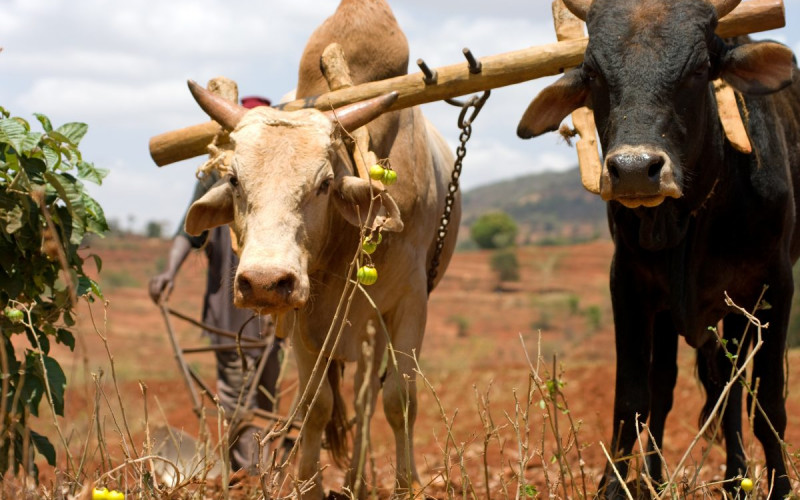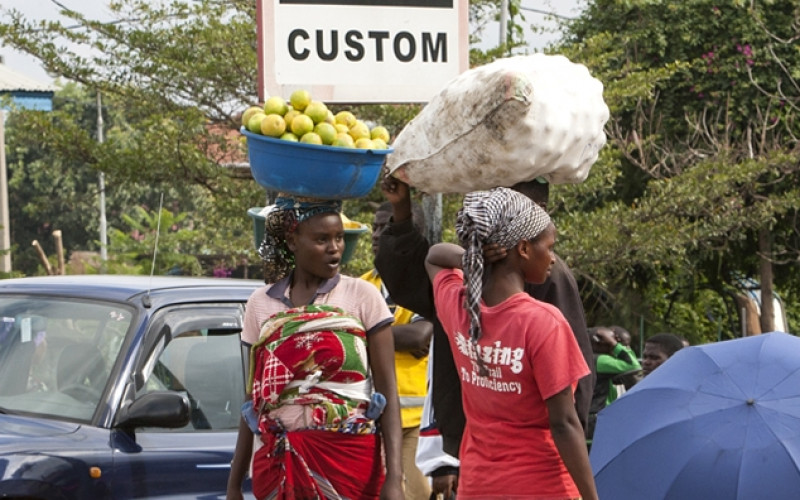But a basic question has never been asked or answered: will the pursuit of the MDGs help or hurt development, particularly in Africa? The rationale for setting poverty reduction goals seems simple and straightforward. The world has a predilection for making grand promises and failing to follow through. And a great part of development aid benefits developed-world contractors, goes into wasteful unsustainable projects or is pilfered by recipient governments. As a result, Africa particularly has little to show for the more than $1 trillion in aid and loans it has consumed since independence.
Establishing some goals and measuring countries against them is one way to try to move the aid industry beyond its focus on promises to the actual delivery of results.
In contrast to the Cold War era, when loyalties in the East-West battle often determined aid flows in spite of obvious waste and corruption, the MDGs have contributed to a constructive global debate about how to make aid more effective. But in many ways, the MDGs are having a negative effect on development efforts.
The MDGs are divided into eight broad goals, which include 18 targets or sub-goals (see list on page 10). The first eight of the targets are measurable while the final 10 are more subjective and political (see Goals sidebar). For example goal 8 – develop a global partnership for development – is composed of targets such as making available technology, affording decent jobs to youth and addressing the special needs of landlocked and island states.
Offering a cover-up
The MDGs also provide a kind of political camouflage that diverts attention from more vital questions about why aid agencies don’t deliver long-term results. Instead of debating why agencies choose badly conceived projects or rethinking the staff incentives that lead to impulsive aid spending, aid is shrouded in layer upon layer of poverty reduction rhetoric. Indeed, an industry has grown up around discussing and tracking the MDGs. Web sites and books are dedicated to them. Aid workers must account for them and statisticians measure them. A Google search found 7,130,000 web pages on them.
The MDGs spawn so much rhetoric today because they reflect the perceived callousness and ineffectiveness of IMF-backed structural adjustment. In response to runaway deficit spending and kleptocracy in the 1970s and 1980s, the IMF imposed basic fiscal disciplines, demanded that governments slash wasteful spending, stop fuelling inflation through unrestrained printing of money, privatise and liberalise markets. The abrupt way IMF reforms were implemented created a popular backlash among the poor. In response, the IMF and other donors began trumpeting poverty reduction as the main goal, which was imposed on countries seeking aid or debt relief. The MDGs were the culmination of this shift in thinking from getting fundamentals right to ameliorating the effects of poverty.
Vast developmental efforts have been inspired to address MDG symptoms. But numerical goals always create unintended behavioural consequences. In asking governments to measure their success based on reducing the visible signs of poverty – low incomes, hunger, disease – the MDGs focus on symptoms rather than causes. If a salesman is given bonuses based on the number of sales regardless of their value, he will invariably seek more small orders than large ones, potentially missing higher sales revenues. If he is rewarded for revenue alone, he may just as readily ignore small customers as a waste of time. Depending on the business, either incentive could be disastrous. So it is with poverty.
In poorly managed countries whose bureaucracies have gone for generations without measuring their performance against any standard, measurement intuitively sounds good. But the MDGs oversimplify. If countries succeed in getting girl children into primary school, does it meant that they have succeeded in promoting gender equality and empowering women?
Spoken too soon
Such oversimplification can mean declaring victory prematurely. It can also mean misdirection of resources.
Take education. The goal of universal primary education is politically appealing but does it lead to development? Could Africa not achieve more growth by diverting some primary school funding into technical schools to turn out the bricklayers, carpenters and electricians that are in chronically short supply in the continent? In a world of unlimited resources, more education is better than less. However, when resources are limited it is necessary to balance primary education with secondary, vocational and tertiary. By focusing on gross enrolment, Africa is neglecting a more crucial problem: Its schools have a very poor record in imparting knowledge to students.
Many factors contribute, including unqualified teachers, weak teacher training, low salaries, inept administration, lack of supplies, poor-quality books and teaching aids, teaching in unfamiliar colonial languages, and teaching methods based on rote learning. Zambia illustrates the problem. In the colonial era, elite schools for the children of colonial administrators taught in the colonial language while so-called native schools used indigenous languages. As a point of political symbolism, Zambia’s first post-colonial government decreed that all children would be taught in the colonial language. No one cared that there were too few teachers or that very few rural families spoke English. Thirty years passed before a systematic effort was undertaken to measure literacy. It found that three-quarters of primary school graduates were functionally illiterate because they sat through lessons in an alien tongue.
In assessing the appropriateness of the MDGs, it is first necessary to ask what exactly are the development problems holding Africa back? Is the continent less competitive because it lacks money or does it lack money because it lacks products that people want to buy and the technologies needed to make more out of its natural resources? Being underdeveloped leads to maternal mortality, death by preventable childhood disease and other maladies, but curing those symptoms immediately would not give Africa the know-how needed to stand as a developed region.
Out of focus
The MDGs will fail to develop Africa because they do not focus on growth and productivity. Without growth, Africa will never escape poverty. Instead it will face an eternity of keeping the harsh effects of poverty at bay with aid handouts. That is not a recipe for successful self-reliance.
Even if one assumed that the MDGs were all met by the target date of 2015, it is quite possible, indeed probable that Africa would be further behind economically than today. Even if Africa went beyond the MDGs and addressed its conflict, governance and educational problems, it is likely the rest of the world will move ahead at a much faster pace and steadily out-compete Africa in the few markets that it holds. China has the surplus capacity, low wages and stable infrastructure needed to wipe out Africa’s limited manufacturing industry. And the competitive tropical agricultural producers in Latin America and Southeast Asia could steal away all of the coffee, tea, cocoa, sisal and horticulture markets in which Africa has a modest foothold.
The MDGs took hold of development thinking because many assumed that the market-oriented reforms of IMF structural adjustment did not spark rapid growth and in many cases increased unemployment. Many politicians and analysts reached the wrong conclusion that Africa was a special case and that focusing on growth could not work as it has elsewhere in the world.
The structural adjustment era did not prove growth strategies wrong. It demonstrated that structural adjustment was necessary but insufficient. It was more about restoring fiscal sanity but needed additional growth reforms to directly address the high costs, bureaucracy, poor infrastructure, capricious governance and skills shortages that impede African business.
A cost too great
Structuring African aid and government activity around the MDGs will come with a very great opportunity cost. The continent may spend the next decade and all available resources and still not fully address the health, hunger and educational symptoms of poverty. In so doing, the MDGs divert attention from investments that can directly boost growth and jobs and thus create more resources in future for social programmes.
In fairness, criticising the MDGs for their lack of growth focus is not enough. What would a more growth-oriented set of targets look like? To spark debate, here is a first draft of such a set of African Millennium Growth Goals:
1. Strengthen commercial infrastructure: African business is harmed by unreliable expensive utilities and inefficient, poorly maintained infrastructure. Fixing it will directly boost competitiveness.
- Double the proportion of roads that are pothole free and in good condition by 2010. Surveys of African investors repeatedly cite the poor quality and high cost of African transport as a major impediment to commercial competitiveness both within Africa and for export markets.
- Invest in new electricity generation and distribution to remove all blackouts and load sharing within five years. Business generally and manufacturers specifically cite the routine power outages as an impediment to business. One survey in Uganda found that 25% of investment capital went to the purchase of private generators because business could not function with the unreliable electricity provided by state-owned producers.
- Double port capacity and speed of customs clearances by 2010. African ports are chronically slow, inefficient and capricious in management of customs. Increasing port efficiency will allow more goods to be sold in a year, cut transport costs, boost export competitiveness and lower the cost of capital tied up in goods in transit.
2. Invest in rural economies: Two-thirds of Africans live on farms or indirectly depend on them, but African governments neglect key support services that could boost growth.
- Double operational expenditure and real wages in agricultural research and extension services by 2010. For many years Africa has cut investment in agricultural research and training for farmers. Investment in research and training in new agricultural techniques and seeds can directly assist food security, boost rural incomes and increase exports.
- Double national grain storage capacity by 2008. Africa suffers chronic food insecurity, alternately allowing bumper crops to waste and paying premium prices for emergency food during droughts. Investment in well-managed food storage and security systems could stabilise prices and encourage farm investment because farmers would face predictable prices. More predictable incomes would allow farmers to invest more in productive farm technology.
- Subsidise the sale on a commercial basis of small-scale irrigation equipment. India, Bangladesh and Malawi, among others, have achieved dramatic increases in small farmer productivity and welfare by encouraging the commercial sale of subsidised small-scale irrigation technologies, which allow production during drought years, enable multiple crops per year and higher yields.
- Offer tax incentives to exporters and processors using contract farming models. Many commercial crops must be centrally processed before export. While governments struggle to provide agricultural training, inputs and credit, such commercial processors offer an effective one-stop shop that assists small farmers. The firms educate farmers, work out the right proportions of inputs, offer credit and a ready market at agreed prices, the combination of which has produced big gains in rural incomes. This contract farming model should be encouraged with tax incentives and assistance with infrastructure. It has been used successfully in the tobacco, coffee and tea industries. South African Breweries in Uganda uses such a model to procure the grain needed for its beer. Other successful contract farm companies include Clark Cotton in Zambia, Blue Skies fresh fruit exporters in Ghana, and horticultural processors in Kenya and South Africa.
- Invest in national dairy processing, cold storage and marketing to capture the unrealised value of Africa’s large livestock herds. Africa has significant indigenous knowledge of livestock management and large herds but realises very little of the potential profit and food value of dairy products. Investment in cooperative dairy processing societies can increase rural incomes and food security.
- Create or expand research and certification bodies to assist farmers in meeting phyto-sanitary, quality and packaging standards needed for agricultural exports. Africa’s climate offers the potential for substantially greater agricultural, livestock and fish exports but small farmers lack the ability to research and conduct the required tests to certify that products meet import-country standards. Investing in cooperative national or even regional testing centres and member-based marketing boards could assist small farmers in learning about and accessing lucrative foreign agricultural markets. Government marketing and testing monopolies have proven unwieldy and unresponsive but commercial associations of farmers, with government assistance to testing and research centres has proven effective in harnessing the untapped potential of African farmers.
- Double annual investment in rural feeder roads. Small farmers can only realise the value of their crops if they can get them to market. Investment in rural feeder roads can expand market access and boost rural development.
3. Invest in skills and research: The MDG focus on primary education will do little to help Africa compete, where the far more commercially valuable skills are imparted in secondary, vocational and tertiary education. Africa can only catch up to the rest of the world and boost the competitiveness of its products if it invests in technical skills. A concerted programme to identify skills shortages and deliver them will boost growth.
- Triple the yearly output of skilled and semi-skilled workers. African businesses report severe shortages of many technical workers, including electricians, carpenters, bricklayers, plumbers, and mechanics. Direct investment in technical schools and tax incentives for companies to take on apprentices can boost the pool of these commercially valuable workers.
- Triple the yearly output of university trained accountants and project managers. The UN Millennium Project and the Commission for Africa, among others, note that there is a severe shortage of capacity in financial management, accounting and project management, among other areas. This affects Africa’s capacity to digest aid and is equally an impediment to business growth.
- Enact patent sharing and royalty laws to enable universities to collaborate with the private sector on needed industrial and agricultural research. The success of electronics, chemical, pharmaceutical, agricultural and other industries in the US, Europe, Brazil and Asia were based on close collaboration between universities and industry, who were encouraged to work together through laws allowing sharing of royalties, patents and launching of joint ventures. Africa should do the same.
- Cut in half the fees paid by students in technical, scientific and engineering disciplines. Africa produces too many graduates in humanities and social sciences while facing a shortage of technical and scientific skills. Experimenting with incentives and differential tuition rates could encourage more students to study in commercially valuable areas.
- Boost investment in maths and science at secondary school level. The shortage of scientific graduates from university results from inadequate preparation at high school level. Greater investment in maths and science at lower levels will have commercial payoff for Africa.
4. Increase lending and savings: An estimated 40% of African wealth is invested abroad while African businesses cite lack of credit as a top impediment to growth. Africa can boost growth through strategies to boost the savings pool from which loans can be made and ensure that more money goes into productive lending.
- Cut interest rates to 15% or less in five years. The world over, governments cut interest rates to boost investment and growth. But African interest rates are prohibitively high because of high inflation rates, deficit spending and efforts to prevent currency depreciation. A concerted programme to curtail deficits, limit inflation and cut interest rates would increase the amount of borrowing for productive industrial expansion.
- Strengthen bank regulation to write off bad loans, avoid political lending and increase commercial lending. African banks are weak, poorly regulated and often at risk of collapse because of unrecoverable loans to politically powerful people. Investing in stronger regulation would boost the amount of productive lending by writing off bad debts and ensuring sound lending practices.
- Create a computerised national identification system and registry of loan defaulters. Banks are reluctant to lend because it can be impossible to recover bad debts or determine who is a bad credit risk. Two strategies are needed to help banks with the problem. Most countries lack a computerised national identity system. They also lack a register or tracking system for loan defaulters. Both systems working together can reduce loan defaults and give banks more confidence to lend.
- Invest national pension savings in Africa rather than the developed world. As President Thabo Mbeki noted, African national pension funds invest billions of dollars outside Africa that could be productively invested in the continent. By one estimate, government employee pension funds in 14 African nations had total assets of $127 billion.
5. Raise domestic revenue: Africa is chronically short of developmental funds, but could do much more to increase the revenue available for a growth agenda.
- Tax luxury goods, including expensive cars and consumer electronics, to fund expanded investment. Does anyone really need luxury cars, home theatre systems and gourmet imported foods and alcohol? Imposing stiff taxes on such items across the continent would raise needed revenue and help direct funds into more productive efforts.
- Cut in half spending on government use of mobile telephones, vehicles and international travel. Governments spend vast sums on luxuries that could be cut.
6. Promote justice and the rule of law: The failure of African courts to deliver fair and timely justice is closely related to the unwillingness of banks to lend and the fear of foreign businesses to invest. Investing in court competence and efficiency would also pay broad political dividends to disillusioned citizens, who face demands for bribes when they seek help from police and courts.
- Double the capacity of courts and cut by two-thirds the time and cost of securing judgements in commercial matters.
7. Remove bureaucratic obstacles to business: The World Bank’s annual survey of impact of regulation on business found Africa to be the most difficult continent in which to do business. The 2005 survey found it takes an average of 434 days and 35.9 procedures to enforce a contract in sub-Saharan Africa. It takes an average of 11 procedures and 63 days to start a business with costs running three times the average per capita income.
- Cut by two-thirds the number of steps and the amount of time needed to open a business
- Cut by two-thirds the number of steps and the amount of time needed to obtain land for commercial purposes.
- Convert land ownership from customary to freehold title by 2015.
8. Level the commercial playing field by fighting corruption: Corruption is regularly cited as a top impediment to investment in Africa. It diverts business away from the most efficient, warps and delays government decision-making and moves money out of productive uses into private pockets.
- Double the funding and staff at anti-corruption authorities, auditors general, tender boards and financial/audit control departments.
- Adopt model transparent tendering laws.
- Pass laws clearly defining conflict of interest for government workers to forbid the relatives of politicians and civil servants from participating in state tenders.
- Pass laws requiring the full disclosure of wealth held by parliamentarians, ministers, presidents, judges and senior civil servants. Disclosure must be open to the public and media and not sealed in a closed parliamentary register.
- Require all businesses to disclose all payments to government officials directly and through any outside agents or proxies.
- Enact freedom of information laws to enable citizens and the media to gain access to all tendering documentation in a timely manner.
- De-criminalise libel and remove licensing requirements on journalists and media establishments.
- License independent commercial radio and television to operate over the whole national territory in African states.







